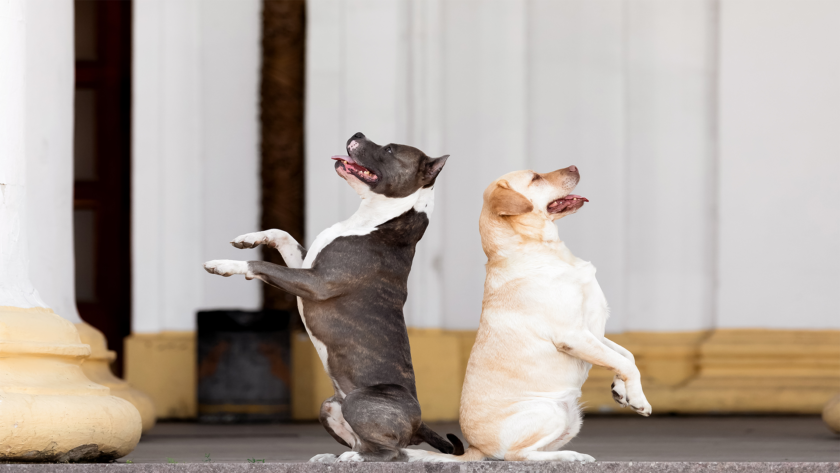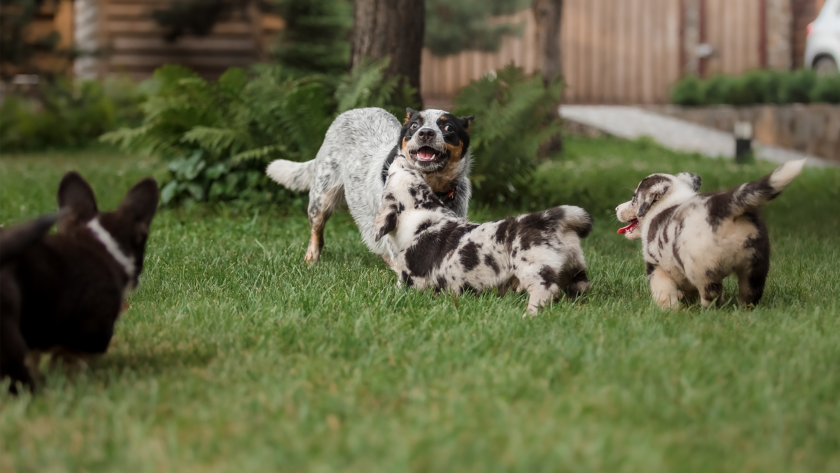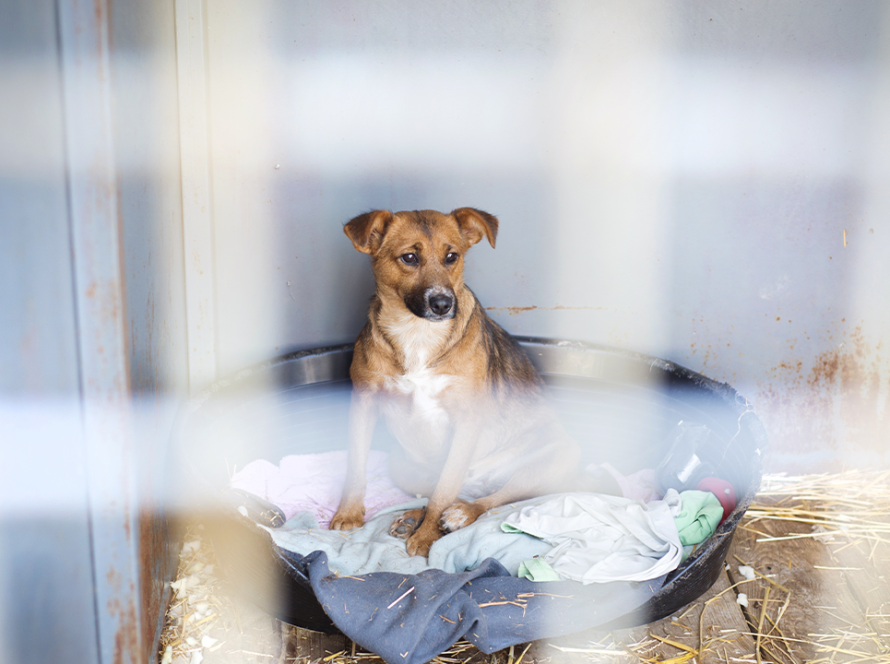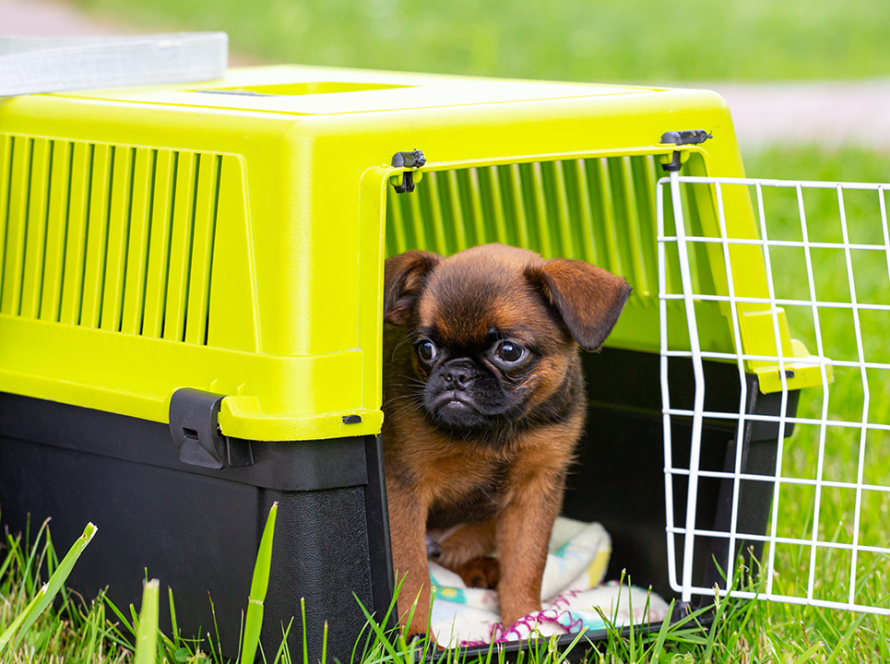Are you planning to get a new dog or puppy ? One of the first things to consider is getting a right size of dog crates by breed for your furry friend. Right size of dog crates by breed serve multiple purposes and are an essential tool for pet owners. Right size of dog crates by breed provide a safe space for your dog, help with house training, and assist in managing behavioral issues like separation anxiety.
Dog Crate Uses:
- To provide a safe and secure space for a dog, especially when they are unsupervised or during travel.
- As a tool for house training, teaching dogs to hold their bladder and bowels, and creating a routine for bathroom breaks.
- To act as a retreat or den for a dog, offering a place where they can feel secure and have their own space.
- As a temporary containment solution for managing a dog’s behavior, particularly in cases of separation anxiety, destructive behavior, or when visitors are present.
- For facilitating safe transportation of dogs in vehicles, ensuring their safety and preventing distractions to the driver.

What Size of Dog Crates by Breed Does My Dog Need?
When choosing a size of dog crates by breed for your dog, it is important to consider their full-grown size and weight. A crate that is too small can be uncomfortable and restrictive, while a crate that is too large may not feel secure for the dog. Here are some guidelines for determining the right size of dog crates by breed:
Small Breeds:
- For toy breeds like Chihuahuas and Yorkshire Terriers, size of dog crates by breed measuring 18-22 inches in length is recommended.
- For small breeds like Maltese and Shih Tzus, size of dog crates by breed measuring 24-30 inches in length is suitable.
Medium Breeds:
- For medium-sized breeds like Beagles and Cocker Spaniels, size of dog crates by breed measuring 30-36 inches in length is recommended.
- For medium breeds like Bulldogs and Collies, size of dog crates by breed measuring 36-42 inches in length is suitable.
Large Breeds:
- For large breeds like Labrador Retrievers and Golden Retrievers, size of dog crates by breed measuring 42-48 inches in length is recommended.
- For giant breeds like Great Danes and Mastiffs, size of dog crates by breed measuring 48-54 inches in length is suitable.
Other Factors to Consider:
Aside from the size of dog crates by breed of your dog, there are other factors that can affect the size of crate you should choose. These include:
Age and Growth:
If you have a puppy, it is important to consider their expected growth when choosing a size of dog crates by breed. Many size of dog crates by breed come with dividers that can be adjusted to accommodate a growing puppy.
Activity Level:
For high-energy dogs that require more space to move around, it is recommended to choose a crate on the larger side of their size range.
Purpose:
Consider the primary purpose for using a right size of dog crates by breed. If it is for house training or as a retreat, a smaller crate may be suitable. However, if it is for temporary containment, a larger crate may be necessary to accommodate the dog’s movement and comfort.
Crate Sizes For Different Dog Breeds.
Here is a table of recommended crate sizes by breed:
| Breed | Crate Size (inches) |
|——-|———————|
| Chihuahua | 18-22 |
| Yorkshire Terrier | 18-22 |
| Maltese | 24-30 |
| Shih Tzu | 24-30 |
| Beagle | 30-36 |
| Cocker Spaniel | 30-36 |
| Bulldog | 36-42 |
| Collie | 36-42 |
| Labrador Retriever | 42-48 |
| Golden Retriever | 42-48 |
| Great Dane | 48-54 |
| Mastiff | 48-54 |
| Chihuahua | 18-22 |:
The Chihuahua, known for its small size and big personality, is best suited for a crate that measures between 18-22 inches. This size of dog crates by breed will provide enough space for the Chihuahua to move around comfortably while also feeling secure in their own little den.
| Yorkshire Terrier | 18-22 |:
Another toy breed, the Yorkshire Terrier, also does well with a crate size of 18-22 inches. This breed may be small, but they have a lot of energy and will appreciate having their own space to retreat to when needed.
| Maltese | 24-30 |:
The Maltese is a gentle and affectionate breed that does well with a crate size of 24-30 inches. This will give them plenty of room to stretch out and relax.
| Shih Tzu | 24-30 |:
Similar to the Maltese, the Shih Tzu is a small breed that does well with a crate size of 24-30 inches. They are known for their playful nature, so having a little extra space in their crate can be beneficial.
| Beagle | 30-36 |:
Beagles are medium-sized dogs that require a bit more space in their crates. A size of 30-36 inches will give them enough room to move around and stretch, while still feeling cozy and secure.
| Cocker Spaniel | 30-36 |:
Another medium-sized breed, the Cocker Spaniel, also does well with a size of dog crates by breed of 30-36 inches. They are friendly and active dogs, so having enough space in their crate is important for their comfort.
| Bulldog | 36-42 |:
Bulldogs may have a stocky build, but they still require a decent amount of space in their crate. A size of 36-42 inches will allow them to move around comfortably and have enough room for their bedding.
| Collie | 36-42 |:
Collies are a large breed that requires a larger size of dog crates by breed, typically between 36-42 inches. They are known for their intelligence and need plenty of space to stretch out and relax.
| Labrador Retriever | 42-48 |:
Labrador Retrievers are a popular breed known for their friendly and energetic nature. They do well with a crate size of 42-48 inches, giving them plenty of room to move around and feel comfortable.
| Golden Retriever | 42-48 |:
Similar to the Labrador Retriever, Golden Retrievers are a large breed that require a crate size of 42-48 inches. They have a lot of energy and will appreciate having plenty of space to move around.
| Great Dane | 48-54 |:
The largest breed on our list, the Great Dane, requires a crate size of 48-54 inches. These gentle giants need enough room to comfortably lie down and stretch out.
| Mastiff | 48-54 |:
Mastiffs are another large breed that do well with a crate size of 48-54 inches. They are known for their calm and affectionate nature, but still require enough space to feel comfortable in their crate.
Remember, these are just general guidelines and it is important to also consider your dog’s individual needs and preferences when choosing a right size of dog crates by breed. It may be helpful to consult with a veterinarian or professional trainer for further guidance. With the right size of dog crates by breed, you can provide your furry friend with a comfortable and secure space that meets their specific needs.
Some Other Tips to Buy a Right Size Crate:
When selecting a crate for your canine companion, size is of utmost importance. A properly sized crate ensures the safety, comfort, and well-being of your dog, whether used for transportation or as a cozy retreat within your home.
Below is a guide outlining recommended crate sizes for different dog breeds. Please note that these are general recommendations, as individual dogs may vary in size based on their specific lineage or individual build. Always measure size of your dog before buying a right size of dog crates by breed.
.
Tiny Size of Dog Crates by Breed
Suitable for: Chihuahua, Pomeranian, Toy Poodle
- Crate size: 18″-22″ (Length)
- Crate A: 18″L x 12″W x 14″H
- Crate B: 22″L x 13″W x 16″H
Small Size of Dog Crates by Breed
Suitable for: Boston Terrier, Dachshund, Miniature Schnauzer
- Crate size: 24″ (Length)
- Crate A: 24″L x 18″W x 19″H
- Crate B: 24″L x 18″W x 21″H
Medium Size of Dog Crates by Breed
Suitable for: Beagle, Bulldog, Cocker Spaniel
- Crate size: 30″-36″ (Length)
- Crate A: 30″L x 19″W x 21″H
- Crate B: 36″L x 23″W x 25″H
Large Size of Dog Crates by Breed
Suitable for: Boxer, Golden Retriever, Labrador Retriever
- Crate size: 42″ (Length)
- Crate A: 42″L x 28″W x 30″H
- Crate B: 42″L x 28″W x 31″H
Giant Breeds
Suitable for: Great Dane, Mastiff, Bernese Mountain Dog
- Crate size: 48″-54″ (Length)
- Crate A: 48″L x 30″W x 33″H
- Crate B: 54″L x 37″W x 45″H
Pro Tips for Selecting a Crate Size
- Sizing Up: Ensure that the crate is large enough for your dog to stand up, lie down, and turn around comfortably.
- Puppy Consideration: If you’re buying for a puppy, consider purchasing a crate that fits its expected adult size, with a divider to adjust the crate’s interior as it grows.
- Material Matters: Besides size, choose a crate material that suits your dog’s needs — whether that’s heavy-duty metal for strong pups, fabric for travel, or attractive wood to blend with your home decor.
Remember, the crate should be a positive space for your pet. The right fit will help them see it as their own personal den where they can feel secure and relaxed.
Choosing The Right Kind Of Dog Crate.
In addition to size, there are also different types of dog crates available on the market. Here are some options to consider:
Wire Crates:
Wire crates offer good ventilation and visibility, making them suitable for travel and as a retreat for dogs that don’t have destructive tendencies.
Plastic Crates:
Plastic crates provide more privacy and can be used in cars for transport. They are also suitable for dogs that may feel more secure in an enclosed space.
Soft-Sided Crates:
Soft-sided crates are lightweight and easy to set up, making them great for travel. However, they may not be suitable for dogs that can easily chew through fabric.
Heavy-Duty Crates:
For dogs with destructive behavior or those who need extra security, heavy-duty crates made of steel or aluminum are a good option.
No matter what type of crate you choose, make sure it is the right size of dog crates by breed and that your dog is comfortable using it. With proper training and patience, a crate can become a safe and enjoyable space for your dog to call their own. So take some time to research and consider your options before making a decision, and always prioritize your dog’s well-being and comfort.

How To Turn Your Dog Crate Into Their Happy Space:
Now that you have chosen the right size and type of crate for your dog, it’s important to make sure they see it as a positive space. Here are some tips for making your dog’s crate their happy place:
- Start by placing treats and toys in the crate to encourage them to explore and associate it with something positive.
- Feed your dog meals in the right size of dog crates by breed to create a positive association with mealtime and the crate.
- Gradually increase the amount of time your dog spends in the crate, starting with short periods and gradually building up to longer periods.
- Make sure your dog has plenty of exercise and mental stimulation outside of the crate to prevent them from feeling restless or anxious inside it.
CONCLUSION:
With patience and consistency, your dog will soon see their crate as a cozy and safe space that they happily retreat to. And with the right size of dog crates by breed, you can have peace of mind knowing that your furry friend is comfortable.
FAQS:
Q: Can I use a crate for my dog’s entire life?
A: While some dogs may enjoy having their own space throughout their lives, it is important to also provide them with ample exercise and socialization outside of the crate. Consult with a veterinarian or professional trainer for guidance on when it may be appropriate to start weaning your dog off of using a crate.
Q: Can I leave my dog in a crate for long periods of time?
A: It is not recommended to leave your dog in a crate for more than 4-6 hours at a time. Make sure they have access to water and have had plenty of exercise before being confined to the crate for an extended period.
Q: Should I cover my dog’s crate with a blanket?
A: This depends on your dog’s individual preferences. Some dogs may feel more secure with a cover over their crate, while others may find it too confining. Experiment and see what works best for your dog.
Q: Can I use a crate as punishment for my dog?
A: No, crates should never be used as punishment for your dog. It should always be associated with positive experiences, and using it as a form of punishment can create negative associations and potentially lead to behavioral issues. Remember to always treat your furry friend with love and patience.




9 Comments